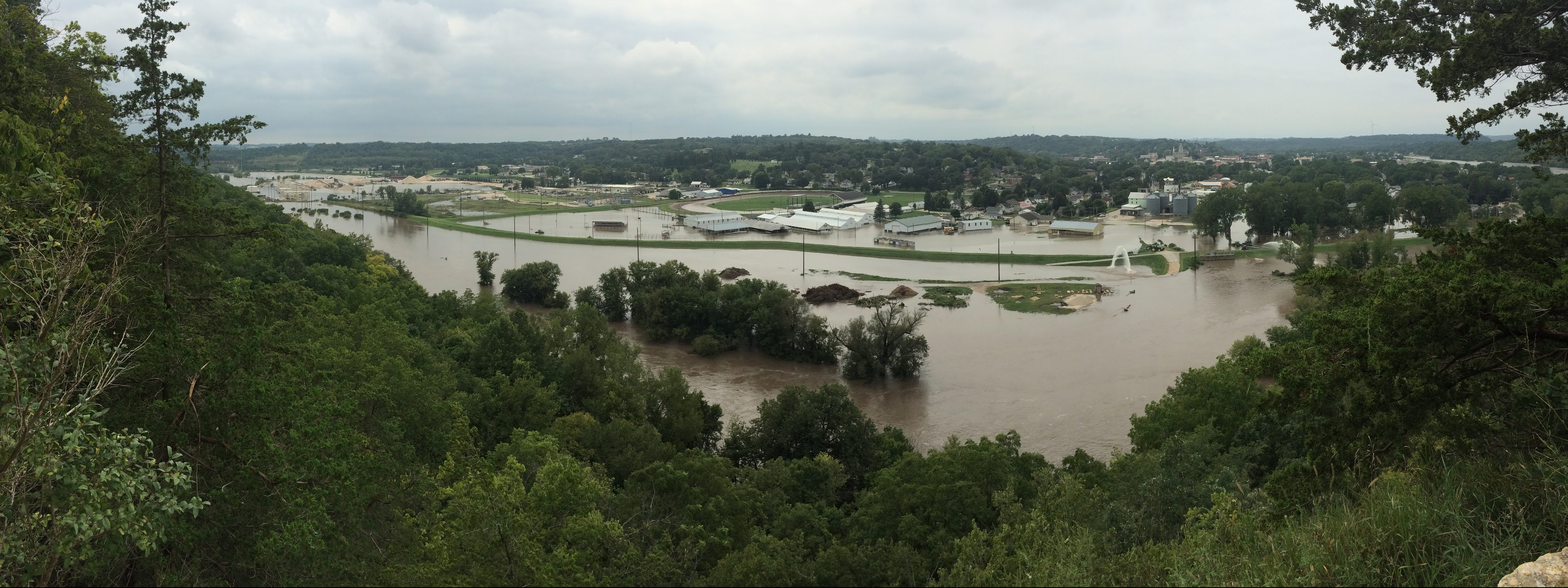
A family who has survived a single flood event that destroyed their home; the river community members who are trying to figure out how to clean up miles of flood debri from the backwaters of the Mississippi River; the business owner who lost all or part of their business to flooding one too many times; the farmer whose field was washed away – again or is trying to harvest a field littered with hazardous flood debris; the commuter who has to travel 30 minutes out of their way because a bridge was washed out; the volunteer who has helped devastated flood victims recover; and the taxpayer who is frustrated with how much money the Federal Emergency Management Agency is spending to clean up flood damage rather than prevent it, all have different perspectives on flooding. The multitude of perspectives associated with flooding in the UIR Watershed is as diverse as the population.
In the UIR Watershed, as the intensity of individual precipitation events increases, the number of people who have been impacted or know someone who has been impacted by flooding is significant. In a recent survey of the UIR Watershed landowners, 38% of respondents reported having their home, land or business directly impacted by flooding in the past 5 years, and over 75% have been impacted more than 2 times in the past five years. 83% of respondents reported knowing others impacted by flooding and 56% of respondents reported that a road or bridge they use regularly was closed due to flooding. For more results from the Upper Iowa River Resident Survey click here. Also, to read personal stories from the UIR Watershed here.
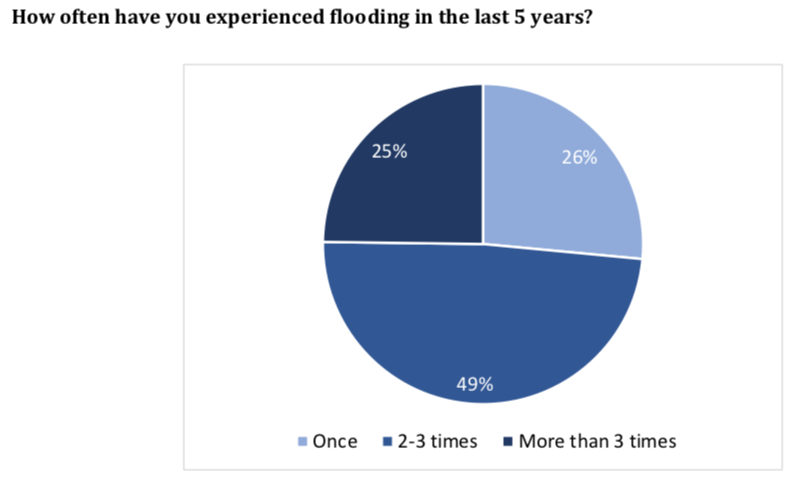
Understanding the climate and hydrology of the watershed, past flood events, and precipitation trends, can help watershed residents and conservation planners better prepare for future flood events. They can develop more realistic goals and strategies to reduce future flooding and its economic, environmental and social impacts, especially on the most vulnerable populations. According to U.S. Climate Data, the annual temperature for Decorah, which is centrally located in the watershed, is 47.3°F and the average annual precipitation is 34.73 inches. However, these statistics don’t tell the whole story. The record low temperature in Iowa is -47 degrees Fahrenheit and the record high 117 degrees Fahrenheit. Residents of the UIR Watershed experience four distinctly different seasons, spring, summer, fall and winter, with varying amounts of rainfall and snowfall, and instances of drought, flooding and extreme humidity. Information about the climate and hydrology can be found here.
It is interesting to note that while mean precipitation totals have not significantly changed in the last 50 years, research presented in the Upper Iowa River Watershed Hydrologic Assessment completed by the Iowa Flood Center shows the intensity of individual precipitation events has increased and is trending upward. The UIR Hydrologic Assessment notes the following.
“Heavy rainfall is increasing in intensity and frequency across the United States and globally and is expected to continue to increase over the next few decades (2021–2050, see Figure 1.16 shown on the left), annual average temperatures are expected to rise by about 2.5°F for the United States, relative to the recent past (average from 1976–2005), under all plausible future climate scenarios.’’ Climate scientists predict precipitation intensity to continue increasing to levels 10-13% higher by mid-century (2050) and 11-20% by the end of the current century (2100).
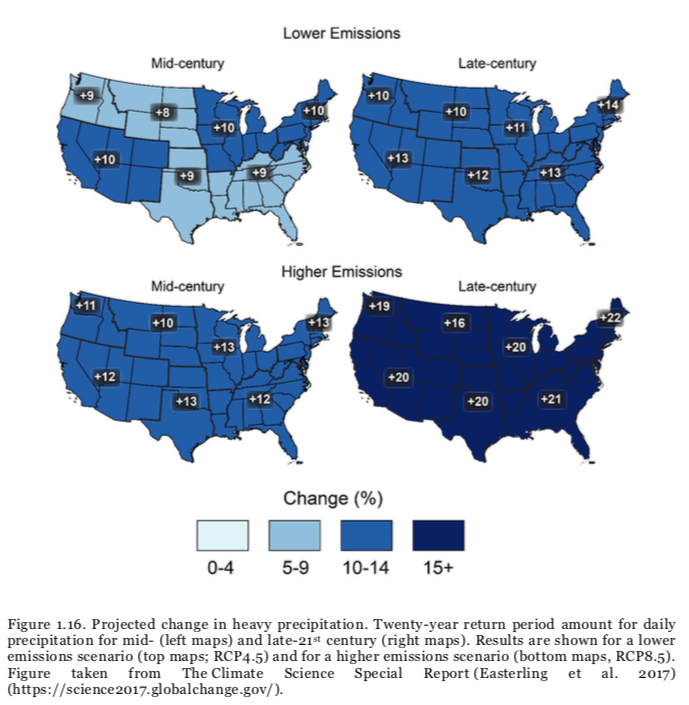
The first major historic flood recorded in the UIR Basin in Iowa by the National Weather Service National Oceanic and Atmospheric Administration occurred on May 27-30, 1941. Their records note,
“The flood event was triggered by 7.70″ of rain which fell in less than 24 hours on the night of May 29 over Decorah and 5.98″ at Waukon. Storm total rainfall centered around Decorah was over 10″ (10.21″ at Decorah) for the period from the 27th through 30th. This caused tremendous flooding in the Upper Iowa River basin, and especially along Dry Run Creek in Decorah. This creek flooded houses and businesses in low-lying areas and washed out roads and bridges in and around Decorah. The maximum discharge at Decorah was 28,500 cfs, still the highest ever recorded within that basin. The recurrence interval estimate for this event at Decorah was in excess of a 500-year event, one of the most severe from a statistical standpoint ever to occur in the LaCrosse HSA. The flood was only slightly less impressive downstream on the Upper Iowa, where Dorchester had its highest recorded discharge at 30,400 cfs , or more than twice the flow of any other recorded event. A USGS estimate gave the flood at this location a 425 year recurrence interval.”
The 1941 flood event has since been surpassed, as recorded at Decorah in 2008 and at Dorchester in 1948, 2008, and 2016. The 2016 flood event had eerily similar consequences to homes in Freeport. Overall, urban and rural land use changes in combination with climate change patterns, has resulted in a greater frequency of large flood events in the UIR Watershed over the past 25 years. Some communities and residents report that the recent frequency of events in the Upper Iowa have left the watershed in a perpetual state of recovery.
The Iowa Flood Center’s Upper Iowa Hydrologic Assessment includes a breakdown of flood events in the UIR Watershed over the past 25 years, noting that flood events are consistently becoming more frequent as the watershed experiences more frequent heavy rainfall events. Table 2.2 in the Upper Iowa Hydrologic Assessment provides information on the historic crests of the UIR at the three river locations where the US Geological Survey (USGS) records stage, Dorchester, Decorah and Bluffton.
Each of the three large flooding events in the last ten years, June 2008, June 2013, and August 2016, were associated with 7–10 inches of rainfall over a one or two-day period. These floods disrupted travel, damaged farmland, homes and businesses and physically, emotionally, and financially impacted the Upper Iowa River Watershed residents. Over half of watershed residents who reported damage from flooding in the past five years reported moderate to severe flood damage to farmland. 28% percent reported moderate to severe damage to homes and 20% percent reported moderate to severe damage to businesses. Downstream residents were also impacted as floodwaters carried hazardous material and debris into fields and backwaters, impacting downstream farms and natural areas, water quality, and ecosystems in the UIR Watershed and the Mississippi River and its backwaters. Private and public properties, including county, state and federal lands were also impacted
Read Personal Stories from the Upper Iowa River Watershed
In 2018, 89% percent of landowner respondents to the UIRW Survey agreed or strongly agreed that flooding is a problem in the UIRW and 80% disagree or strongly disagree that enough is being done in the UIRW to reduce flooding. Fine the full Upper Iowa River Watershed Landowner Survey here. The 2018 landowner survey captures public perceptions. The USGS measurements of Historic River Crests at three points on the UIR documents the actual river stage. The Dorchester gauging station is the furthest downstream. The Decorah gauging station is centrally located along the river corridor and the Bluffton gauging station is the furthest upstream of the three. Each is in Iowa.
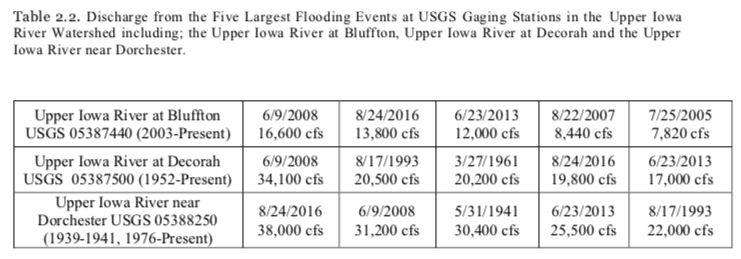
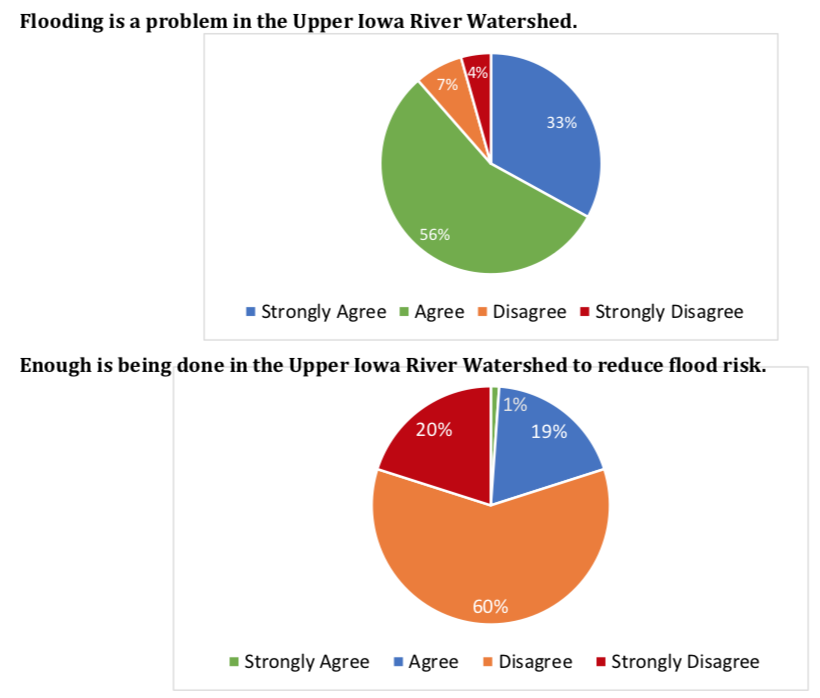
State of Iowa Public Damage & Storm Reporting
Winneshiek, Howard, and Allamakee County Emergency Management Departments ask that in the event of a flood or other storm damage, you use this form to “self-report” damage to your property, roads, utilities or any other storm-related information. The data collected will help Emergency Managers like Sean Snyder of Winneshiek County identify how widespread the damage to the county is from a storm which passes through, and this system will also allow for a seamless transition to submit photos and information to FEMA if counties or individual county residents are declared eligible for reimbursement. Your contact information contained in the damage report will be kept confidential pursuant to Iowa Code § 22.7 (18).
Says Snyder, “The nice thing about this program is that it allows the individual to upload their own damage assessment pictures directly to the site. Once uploaded, the information is then seen by my department for further evaluation, if needed.”
Access the software at: https://survey123.arcgis.com/share/162782ba447e494a8a82fdae29625fd4?open=menu. You can download the app to your smartphone for ease of use after each storm. If people do not have a smartphone, a web browser option is also available.
